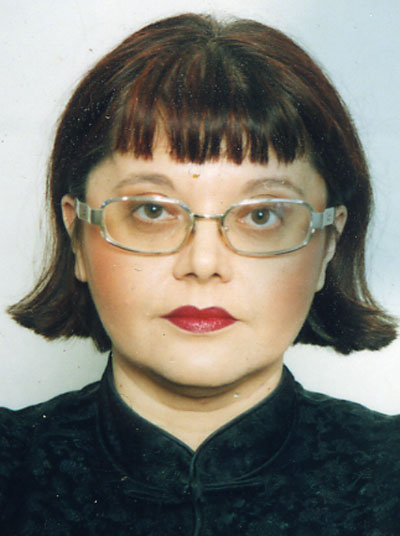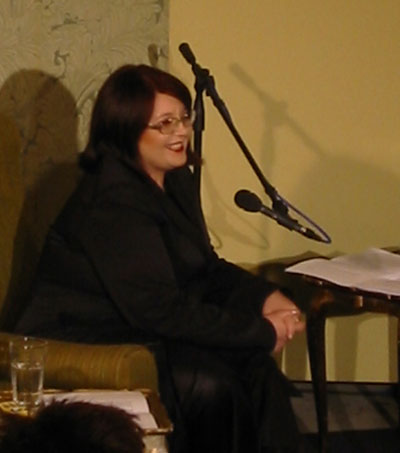Solidarity, Representation and the Question of Testimony in Artistic Practices: An Interview with Suzana Milevska
 Suzana Milevska is an art and visual culture theorist and curator based in Skopje, Macedonia. Her research and curatorial interests include postcolonial critique of hegemonic power in art, complex relationships between gender theory and feminism(s) in art practices, and socially engaged and participatory projects. She holds a Ph.D. in Visual Cultures from Goldsmiths College in London, where she taught from 2003 to 2005. She was the Director of the Center for Visual and Cultural Research at the Euro-Balkan Institute in Skopje (2006 to 2008), and taught History and Theory of Art at the Faculty of Fine Arts in Skopje (2010 to 2012). She is the 2013 recipient of the Igor Zabel Award for Culture and Theory.
Suzana Milevska is an art and visual culture theorist and curator based in Skopje, Macedonia. Her research and curatorial interests include postcolonial critique of hegemonic power in art, complex relationships between gender theory and feminism(s) in art practices, and socially engaged and participatory projects. She holds a Ph.D. in Visual Cultures from Goldsmiths College in London, where she taught from 2003 to 2005. She was the Director of the Center for Visual and Cultural Research at the Euro-Balkan Institute in Skopje (2006 to 2008), and taught History and Theory of Art at the Faculty of Fine Arts in Skopje (2010 to 2012). She is the 2013 recipient of the Igor Zabel Award for Culture and Theory.
Laura Kokkonen, Clàudia Pages Rabal and Ilina Puskás recently talked to Milveska about different examples of racialized visual representations of Roma people and pondered the urgent need for post-representational strategies in art and curating around Roma issues.
Laura Kokkonen, Clàudia Pages Rabal and Ilina Puskás: The concepts at the core of your recent research have been representation and solidarity. Could you define these terms in the context of your work?
 Suzana Milveska: I find it really urgent to discuss representation and solidarity side by side. It is very important that your question refers to this relation, which is not always so obvious. In fact, the limits of representation and representational art practices have led me closer to research art that induces or refers to solidarity with emancipatory movements and struggles.
Suzana Milveska: I find it really urgent to discuss representation and solidarity side by side. It is very important that your question refers to this relation, which is not always so obvious. In fact, the limits of representation and representational art practices have led me closer to research art that induces or refers to solidarity with emancipatory movements and struggles.
Defining representation is not an easy task, when one takes into account the complex and multi-layered meanings entailed in the term. For example, the political and linguistic meanings of representation are interlinked, but yet can stand for completely different things and can be charged with opposite potentials, depending on the various contexts in which they are used. Representation in political terms could ultimately lead towards a higher level of democratic and participatory society. Nonetheless, I see profound problems in artistic practices that are focused on visual representation, particularly in art that is engaged with problems of social inclusion and changing the ways of participation when it comes to different minorities and marginalized individuals or groups in contemporary societies. I see a problem if, although with good intentions, an artistic practice starts and ends with a simple visual singling out and representation of, let’s say, “the face of the other” as a synecdoche (pars pro toto) for an underprivileged group of people. The problem here arises because of the often-confused borders between representation of singularity and representation of identity.
Somehow I see this operation as incomplete, as an open field wherein solidarity could be one of the answers. Solidarity calls for performative action on both sides, on the side of the represented subject but also on the side of the one who attempts to bring forward the representation on equal basis. Unfortunately, representation is not a perfect rhetorical means, particularly in the context of visual arts. It is highly dependent on different culturally and contextually driven interpretations. Just to clarify, when I say performative, this does not necessarily imply performance art: photography could also be used as a performative medium. However, in order to evoke solidarity, I think it is clear that a difference should be made, for example, between portrait photography involving a sitter and performative photography involving a certain action that preceded or coincided with the photographed moment.
LK, CPR, IP: Do you think that “wrong” solidarity as such exists? If it does, how much harm can it do? Is it better or worse for those concerned than a complete lack of solidarity?
SM: I find the question whether there is “wrong” solidarity extremely relevant. More precisely, for me, solidarity is always already an issue of relational activism and not only declarative speech. I consider it very important to equally discuss both sides of solidarity. In this respect, I must warn that there may be a certain danger in the radical way the question was posed with respect to the lack of solidarity. This is because of a logical vicious circle: the formulation of the question is like a loop between the starting point and the last part. If one agrees with the assumption that solidarity is about good will and extremely positive efforts in trying to understand the problems and needsof those who are different, and also agrees with the definition that solidarity imposes acting in solidarity with those who are different from us (as Paul Gilroy put it), then it is really very difficult to imagine a wrong kind of solidarity.
However, the problem arises from the main assumption that solidarity is a concept and action in which one tries to understand and act in solidarity with the Other, the one different from oneself. One thing is to desire rapprochement and another thing is to do it properly: equipped with appropriate commitment, profound interest, knowledge and understanding. If one agrees with the assertion that even if we know everything physical about the others to whom we want to offer our solidarity, we still cannot be aware and know for certain what their experiences are like. From this assertion, it does not follow that we should agree or that we should give up trying to get closer to those unfamiliar others and stop trying to find the answer to the question: what is it like to be other than ourselves. This is a paraphrase of Thomas Nagel’s famous “mortal question” with which he radicalizes the issue of the (im)possibility of understanding the other.
My personal opinion regarding this issue, particularly in the context of art projects, would be that “no harm” policy should be followed with extreme cautiousness. “Not knowing” the subtle nuances and differences of the rituals, customs and ethical rules of the others cannot be an excuse for doing harm when one calls for solidarity. I was profoundly concerned about the project Tzigani-psi by the Serbian artist Zoran Todorovic who recorded his project with cameras that were put on the heads of Roma children without any consent from the parents. Even more surprising was the fact that the project was highly acclaimed and defended, with some exceptions, by the Serbian elitist art and cultural community. It was not taken into account that behind such an art practice is the strange neglecting of the basic respect for certain methodological rules that are accepted in research projects for any community-based research projects. The question remains whether the artists approach other cultures with the same respect and solidarity for which their projects call in the first place.
LK, CPR, IP: Do you see any problems arising from artists changing positions from “representation” to “bearing witness.” Which triggers underlie this shift of tendency and what are the authentications involved in this veer?
SM: “Representation” has a clearly and completely different inner structure for an artist who defines one’s role as the one of “bearing witness.” Depicting certain signs and symbols that stand for persons and phenomena that are represented by selected images, words, photographs, objects has nothing to do with artists who claim to own personal experiences that are not representing something else but are offered as direct testimonials.
However, for Primo Levi there is a certain aporia in such a claim, particularly in radical situations as was the Holocaust. According to him (as quoted by Giorgio Agamben in his Remnants of Auschwitz: The Witness and the Archive), the testimonials of the survivors from the camps were “proxy witnesses” who delivered “silent” testimonials for those who could not testify. However, such fragmented oral micro-histories, even though significantly different from macro-historic documents, fight historical amnesia and warn us about racism’s eternal return. Levi calls this “a potentiality that becomes actual through an impotentiality of speech […] an impossibility that gives itself existence through a possibility of speaking.”
Artists who bear witness to phenomena that are not radically tragic are not necessarily in an easier position, particularly when they are not members of the communities that are in their focus. Instead of those who could not speak and testify “for themselves,” the one who bears witness leaves behind a remnant that bears witness to this inability to speak. Therefore for Agamben, bearing witness to desubjectification is what constitutes the ethical subject as such. In this regard, it is important to state that while the artist is not constituted as the ethical subject through the representational art practice, bearing witness is the artistic practice that makes this viable because of different modes and aims behind it, even though the results may look similar visually.
Finally, I want to make clear that I do not refer to the difference “between the image as depiction of a thing and the image as an ‘artistic operation'” that was problematized by Jacques Rancière in The Emancipated Spectator. Rancière actually proposed an important change of regimes from a representative regime that expresses a complementary image, or action made into a composition, towards the aesthetic regime of “presence or presentation.” I consider that making such a difference is not sufficient in this context because art that aims to “bear witness” understands a certain solidarity, which in the case of artistic representation, is not necessarily pivotal to the artistic impetus behind representational art practice.
LK, CPR, IP: A plethora of testimonies emerged in the last decades in the field of art, increasingly within photography and documentary film. Classic examples with figures of talking witnesses are Shoah (1985) by Claude Lanzmann and films by Harun Farocki. Could you elaborate on your personal standpoint on these practices?
SM: I highly value testimonial art as well as confessional art because I see these performative practices as evidence of an increased artistic self-awareness of the role that art could and should have in our contemporary society. Even if testimonies are also self-referential (as usually are the confessions), they prove that artists today are aware of the relevance of revealing their own positions as artists. If they position themselves as witnesses of a certain phenomenon or event, this might not necessarily be enough but I see this as the first step towards taking the responsibility for what has been observed.
Of course, testimonies can also be very neutral and void of any empathy. In fact, this is exactly what needs to be discussed. The main issues that are still charged with many contradictions in art are issues of morality, ethics and the common good. These issues include many different questions that cannot be answered in art before serious attempts to formulate the questions in an appropriate way are made. Actually, not only are testimonies some of the available methods of artistic enquiry that assist the artists in formulating the right questions, but they could also, sometimes, deliver the answers, particularly if the witnesses are on the both sides of the photo, audio or video recording.



